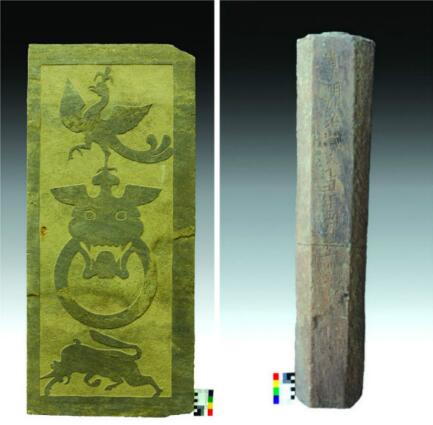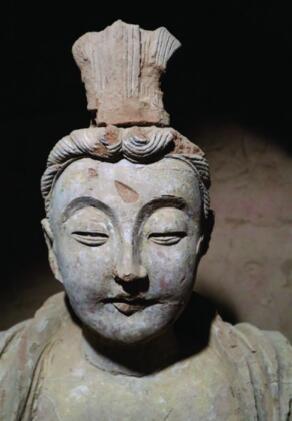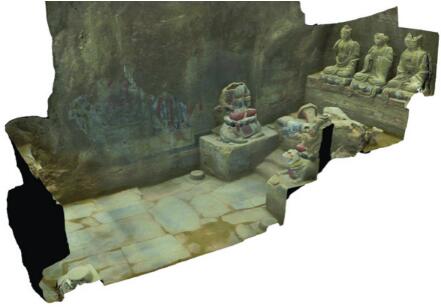The First Excavation of Ming Dynasty’s Cave Buddhism Grottoes in Shaanxi Province
From October to December 2017, Shaanxi Provincial Institute of Archaeology conducted a salvage excavation of Buddhism Grottoes in Mantangchuan Town, Suide County, discovered 2 Buddha Worshipping Grottoes, 3 niches for Buddha statues, and 1 monk's dormitory. The grottoes were facing north, which were dug on the losses cliff, distributed from east to west, numbered as K1 to K6.
K1 was located in the farthest east with 5 meters in depth. The grottoes’ back, middle and bottom parts were complete, and the earth bed, kitchen, floor were well preserved. The grottoes unearthed a few potteries and bricks with only one pottery basin could be restored.

K2, K3 and K6 were small niche grottoes, which were in bad condition, and there were 10 items which were stone niches, stone statues, clay sculpture head, and stone ritual vessels discovered in the latter two grottoes. The 3 statues’ niches were covered with clay, and 2 with carving in the back, “Tianbao” as its record of reign; the 1 statue was Maitreya Buddha with the left arm uncovered, 68 cm in height; 1 statue with back light screen in shape of an upside down heart, which was in back of the statue’s head part. K6 was in the farthest west, there found 3 pieces of statue tablets and 1 ruined ritual vessel. The statue tablets were the same with the one of K3, among them one was also with the reign of “Tianbao” carved in the back.

K4 was in the middle of the site with 5.7 m in depth, which was the largest grotto in the site, and there were three Buddha statues lined up in the back of the niche. The back light of the statues was drawn. It suggested that there was a pillar in the middle south part. There were groups of contributors name on the Buddha’s niche and front wall. 1 painted door of Han Dynasty, 1 stone pillar with chronology, 1 stone beast sculpture, 1 stone ritual vessel and 1 stone rammer were found in the niche as well.

K5 was 2.86 m in depth with a niche in the grotto’s back and pointed top. A Ksitigarbha was in lotus position on the rock seat, where a small beast crouched as well. The mural was in the front wall’s east and west, presented the Scene of Hell, such as Naihe Bridge, local magistrate, ghost soldier, and the dead were very clear. 1 ritual vessel was found in the south part of the grotto carved by the sponsor, which suggested the donation was in the unit of family.

Among the unearthed remains, the painted stone door of K4 was the same with the one of Zhang Wenqin Tomb (the 16th year of Yongyuan reign, Eastern Han Dynasty, AD 104), which was discovered in Baijiashan 1988 and preserved in Han Dynasty’s Mural Museum of Suide County. The niche and statue unearthed in K3 and K6 should be in the age of Middle Tang Dynasty based on their style and carving. The stone pillar and ritual vessels unearthed in K4 and K5 should be in the age of Middle Ming Dynasty according to the calendar inscription. The pottery bowl and tiles in K1, K4 and K5 shared the same characteristics with Ming Dynasty as well.

These Buddhism Earthen Grottoes still remained the combination of Buddha Worshipping Grotto and monk dormitory, which was rare in north Shaanxi Province, even in the whole Shaanxi area, and it was buried very early, except parts were ruined and collapsed, it preserved the statues, mural and Grottoes’ original characteristic of Middle Ming Dynasty, which was significant for the archaeology and cultural heritage. Among the themes of the statues, the combination of Buddha of Three Periods, Ksitigarbha and the story of hell was very special in the Buddhism remain of Ming Dynasty in North Shaanxi Province, which provided precious materials for the study of this area’s geographical transportation, Buddhism cultural communication, and family distribution, etc. (Translator: Lang Langtian)

